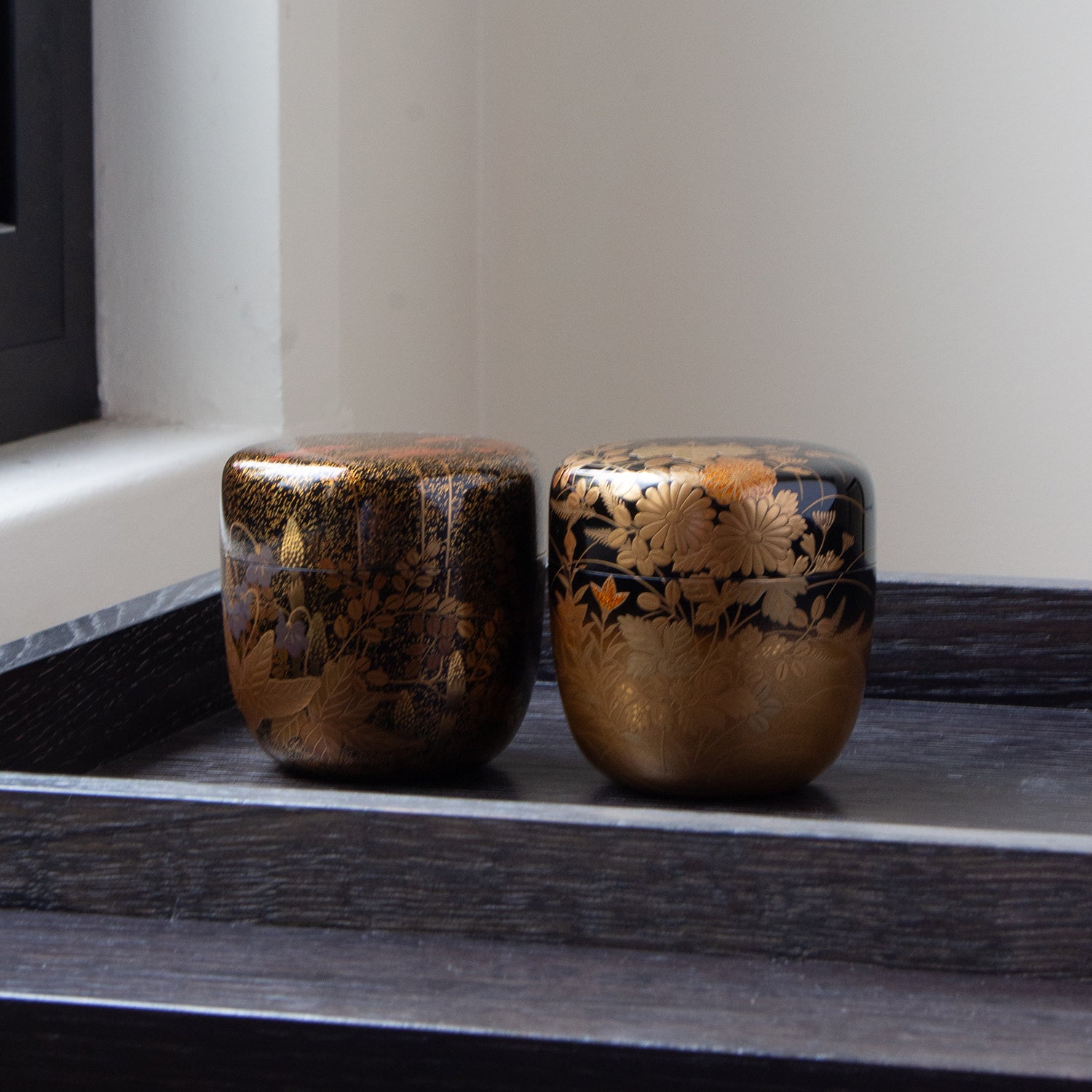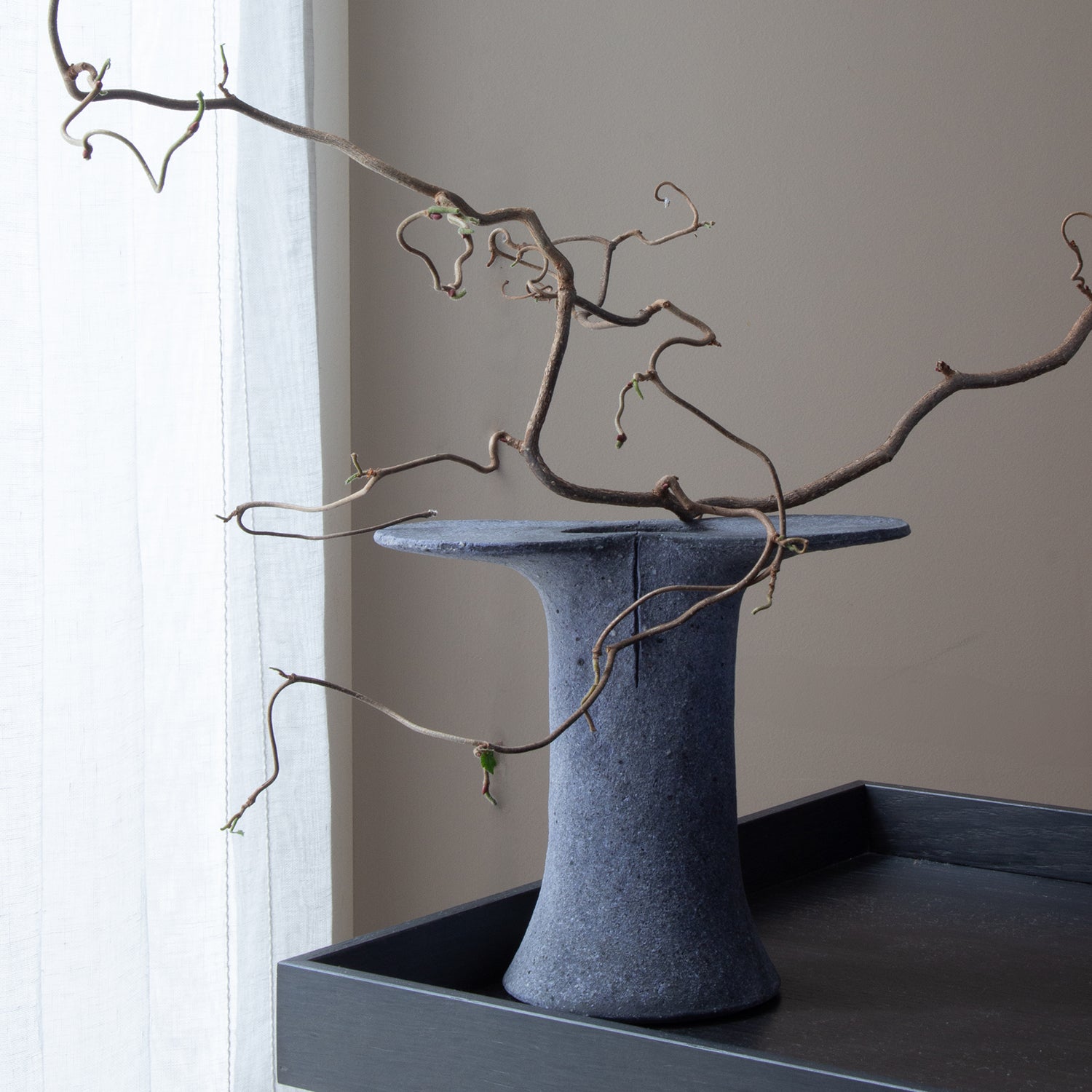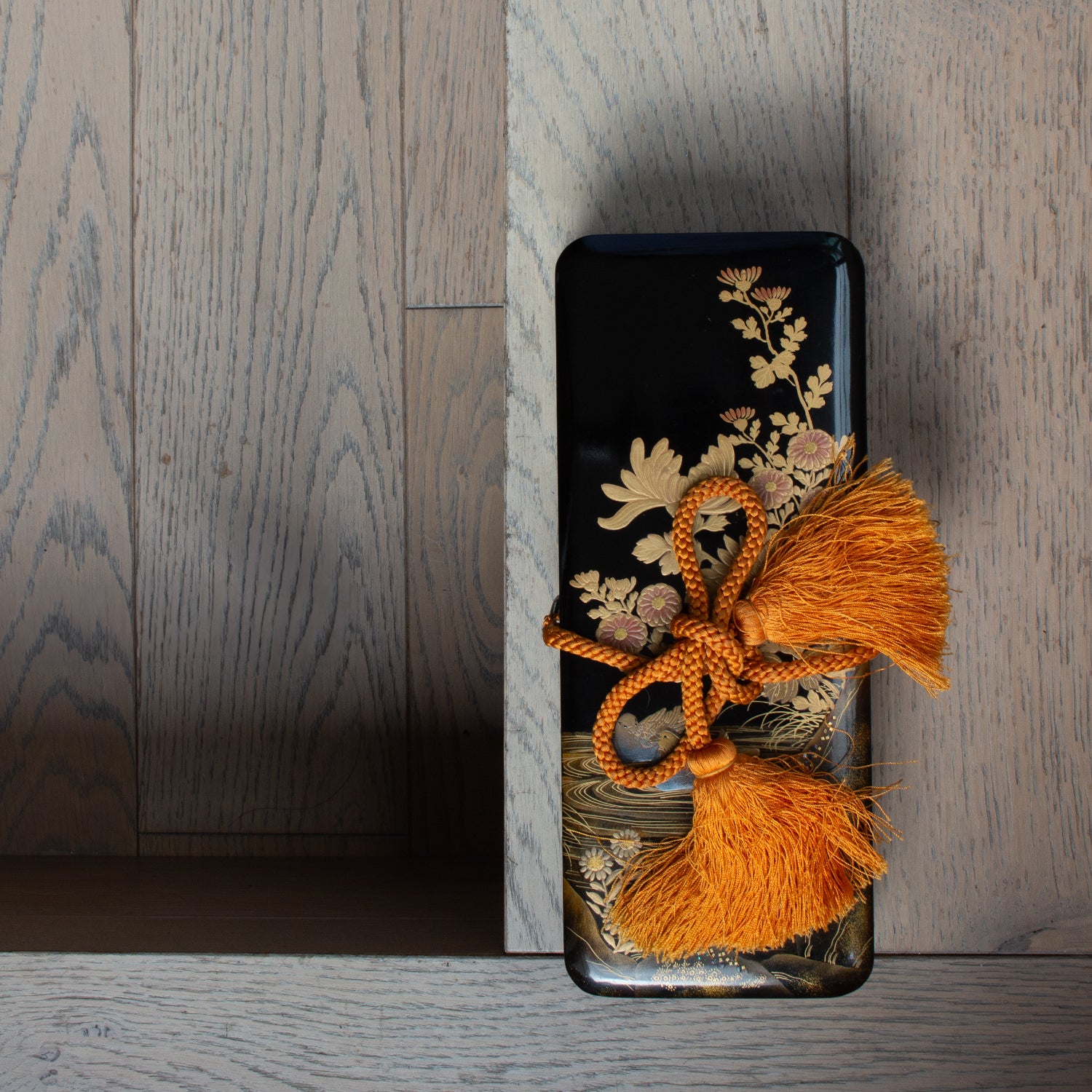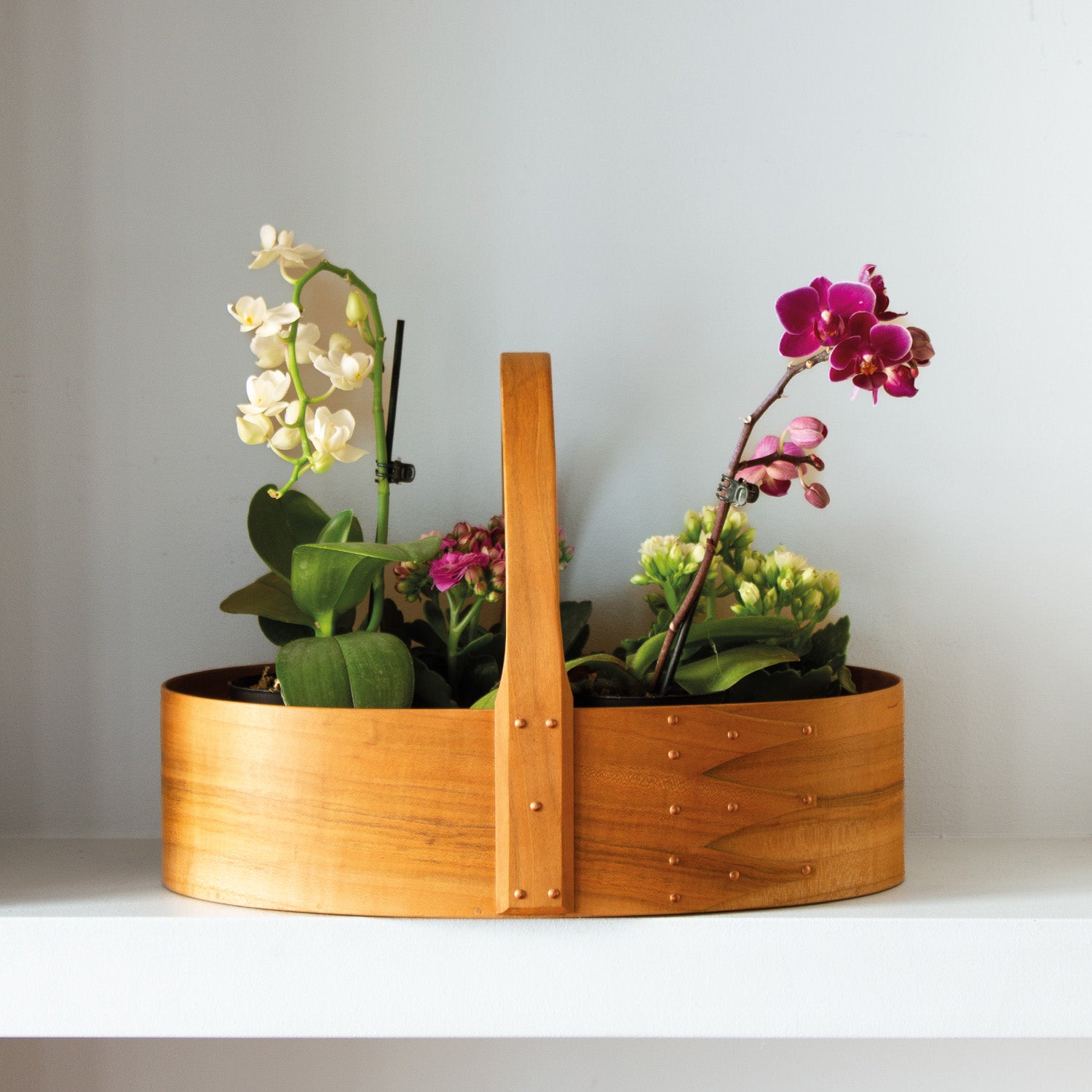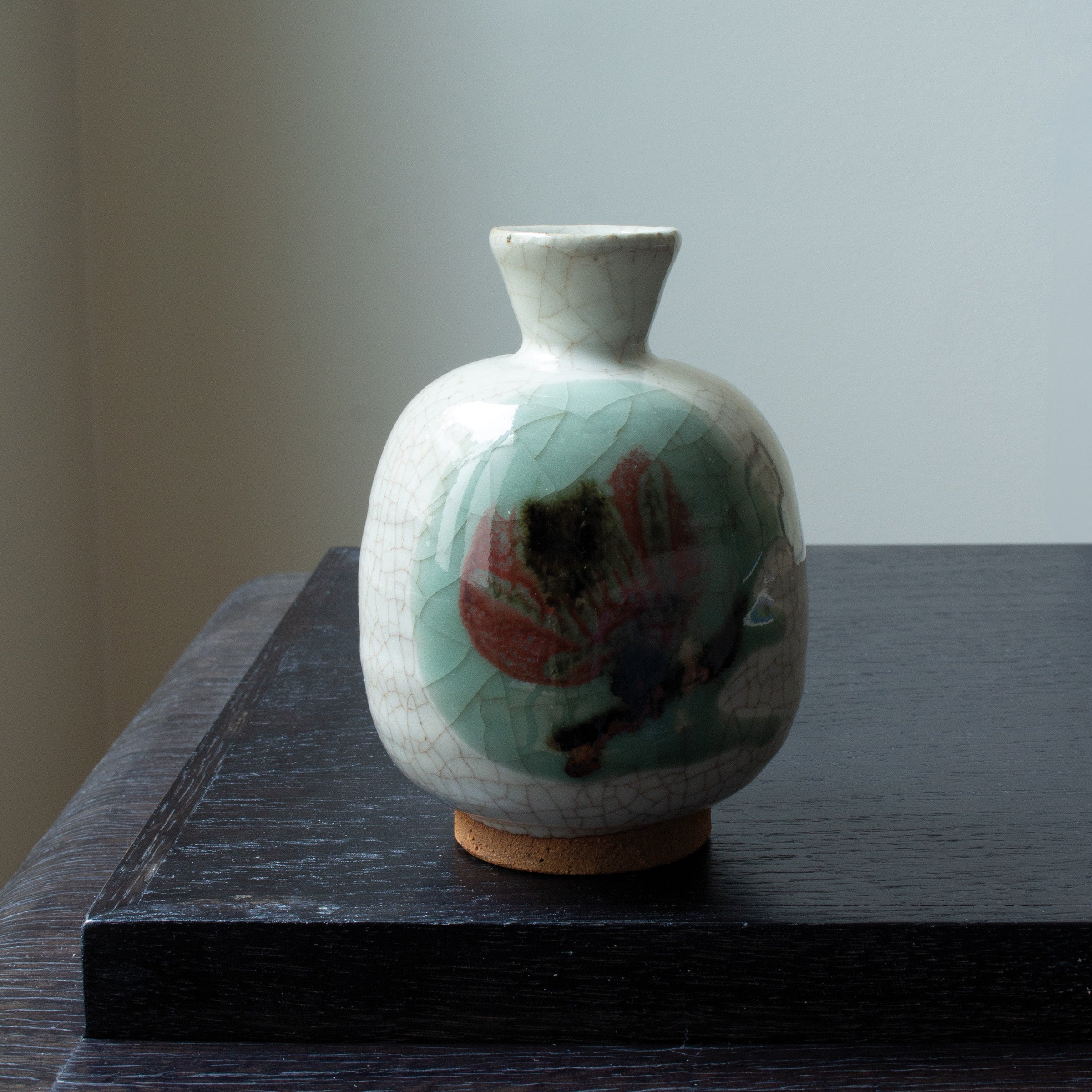
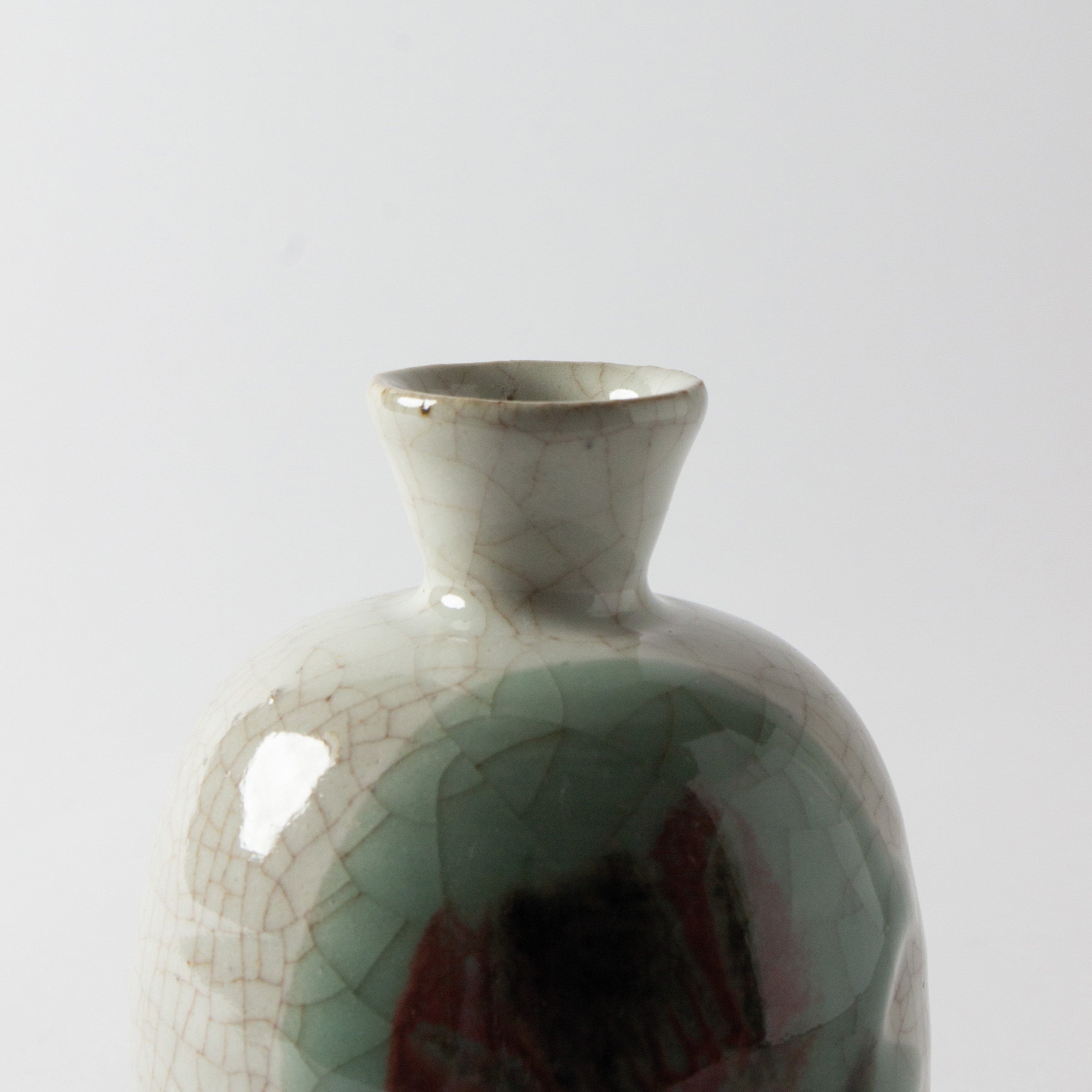
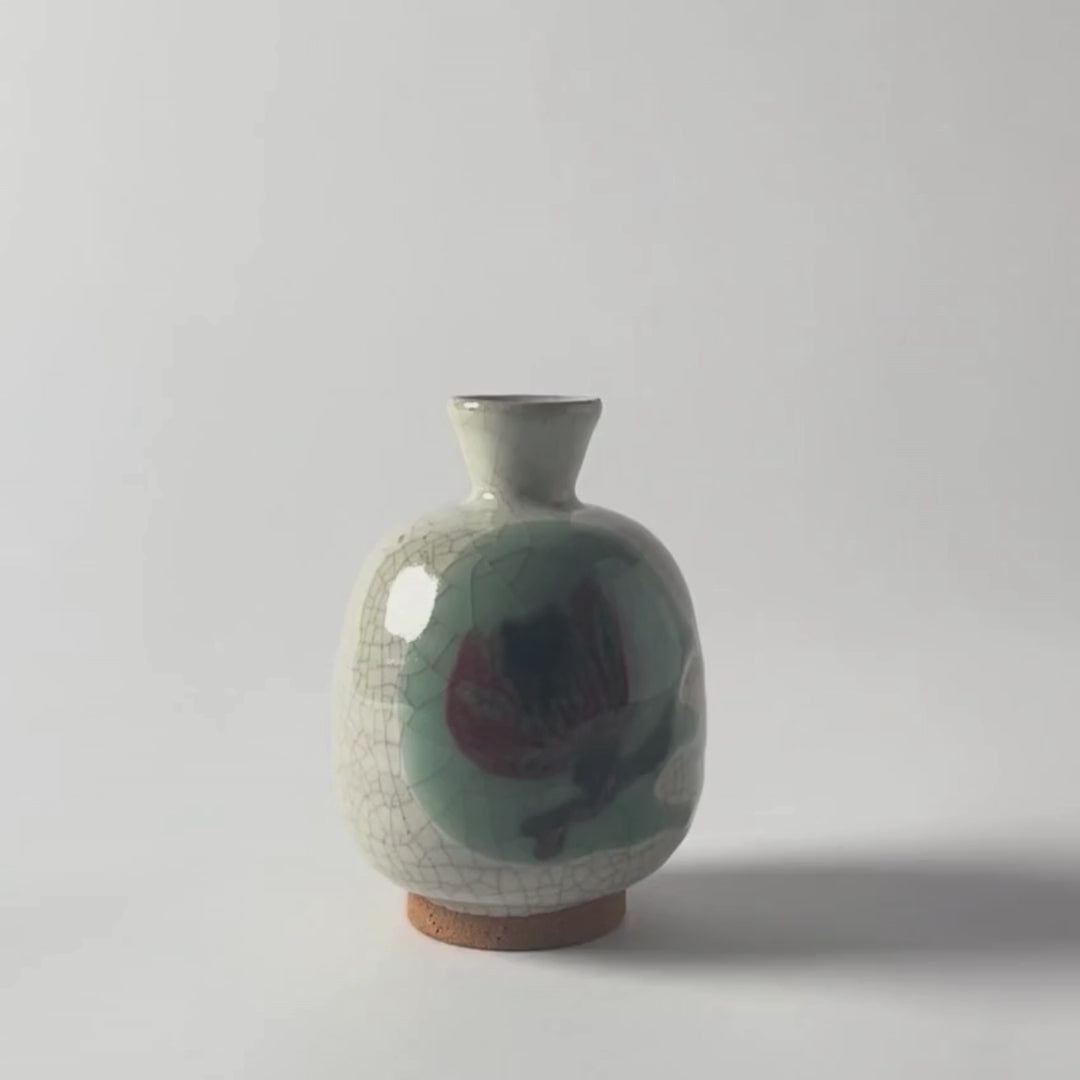
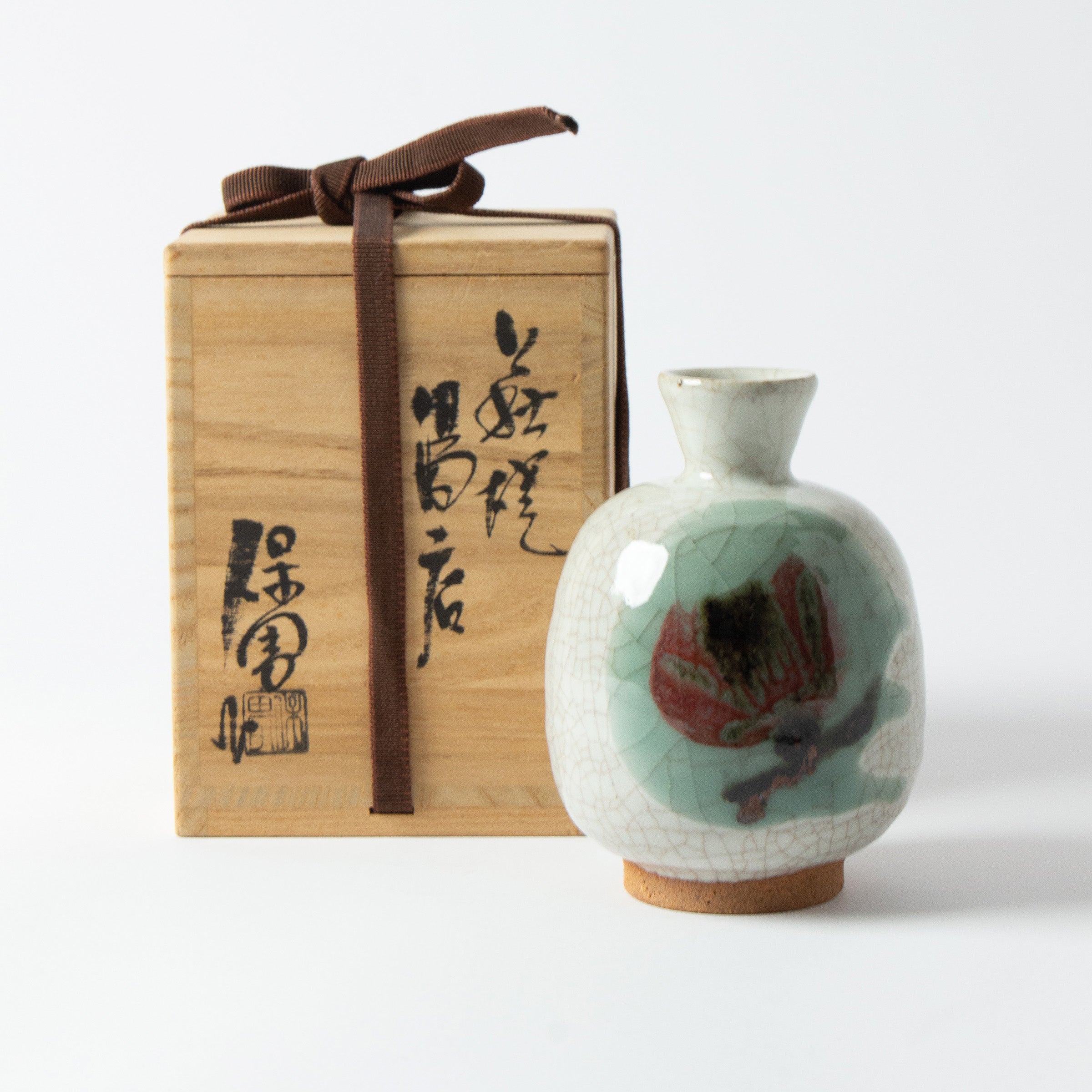
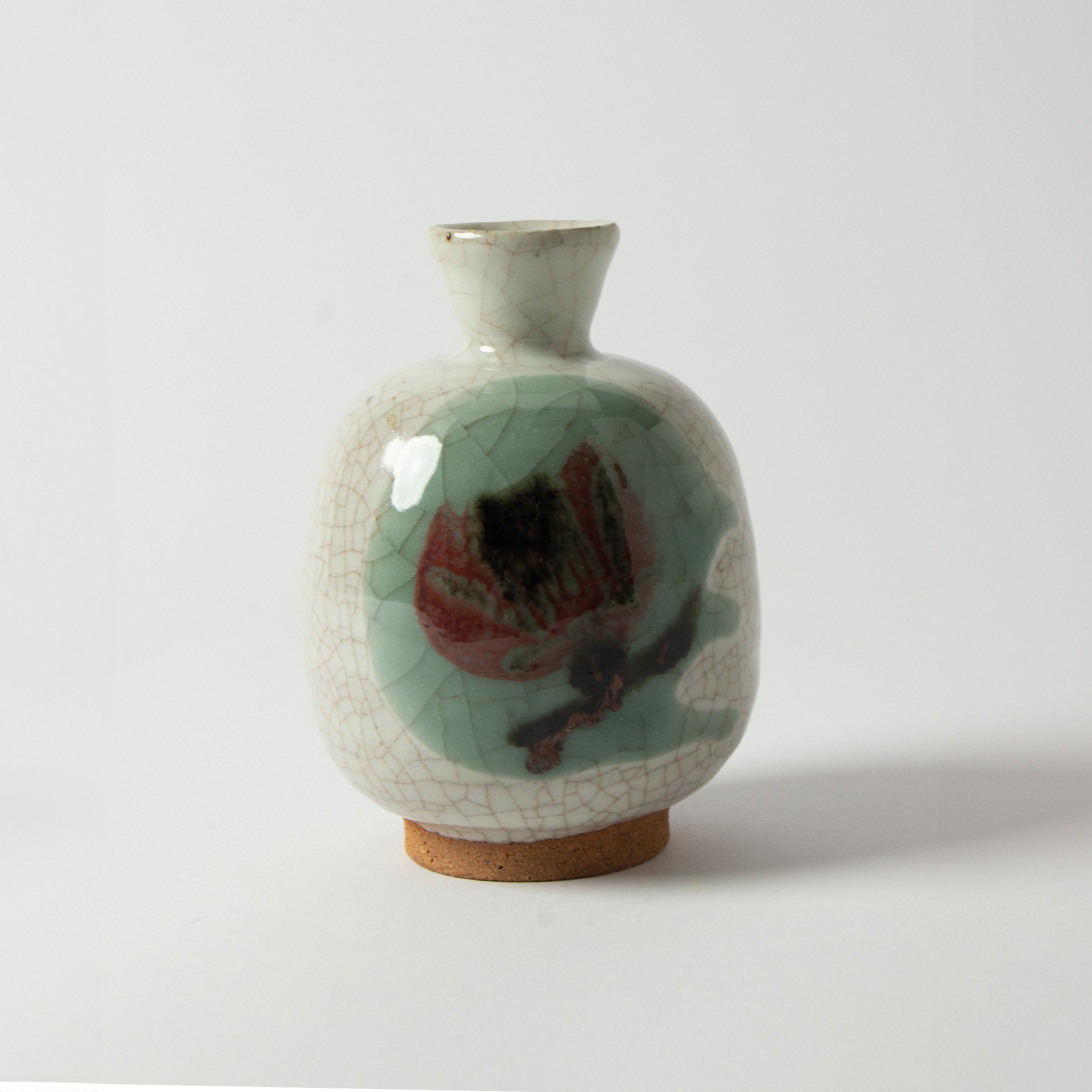
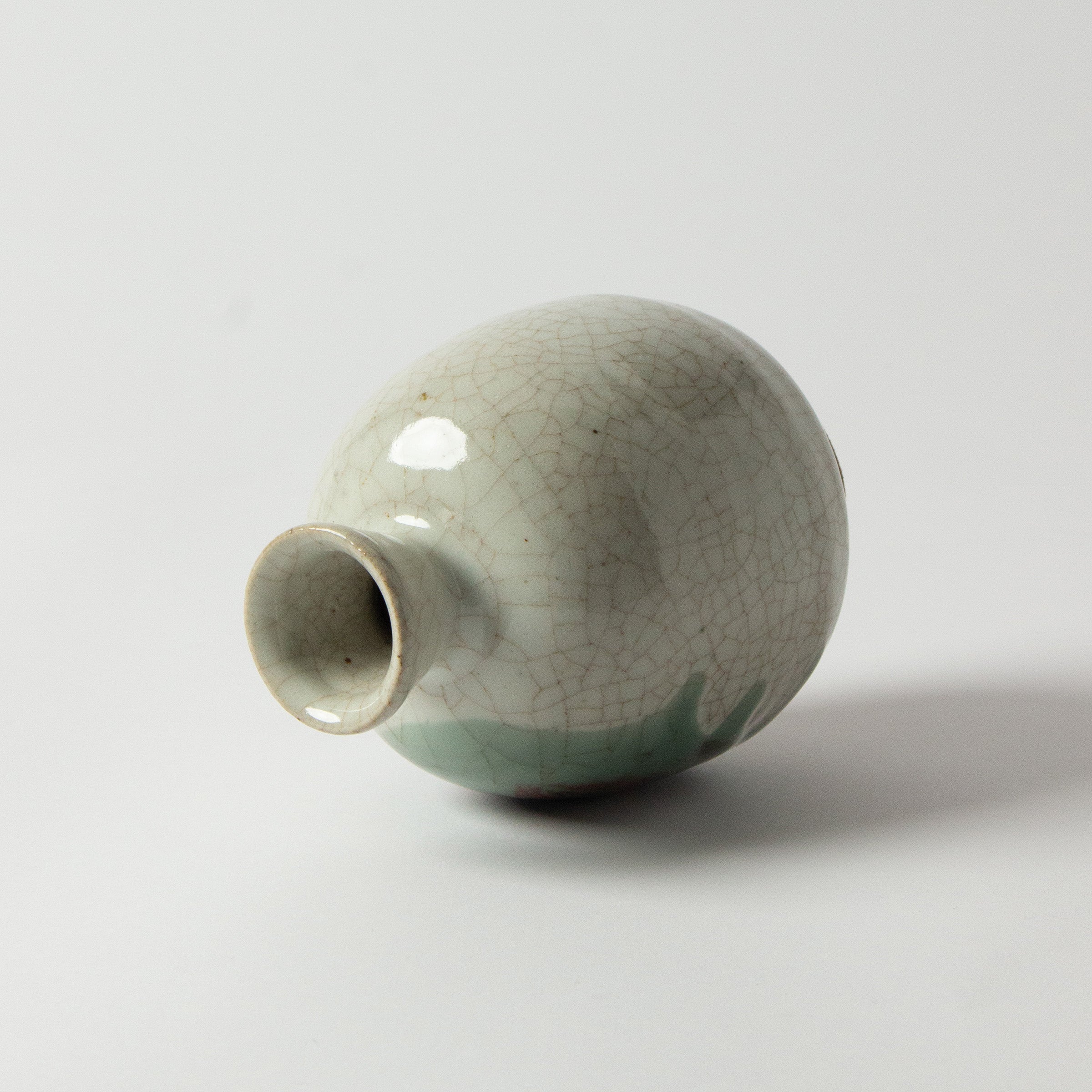
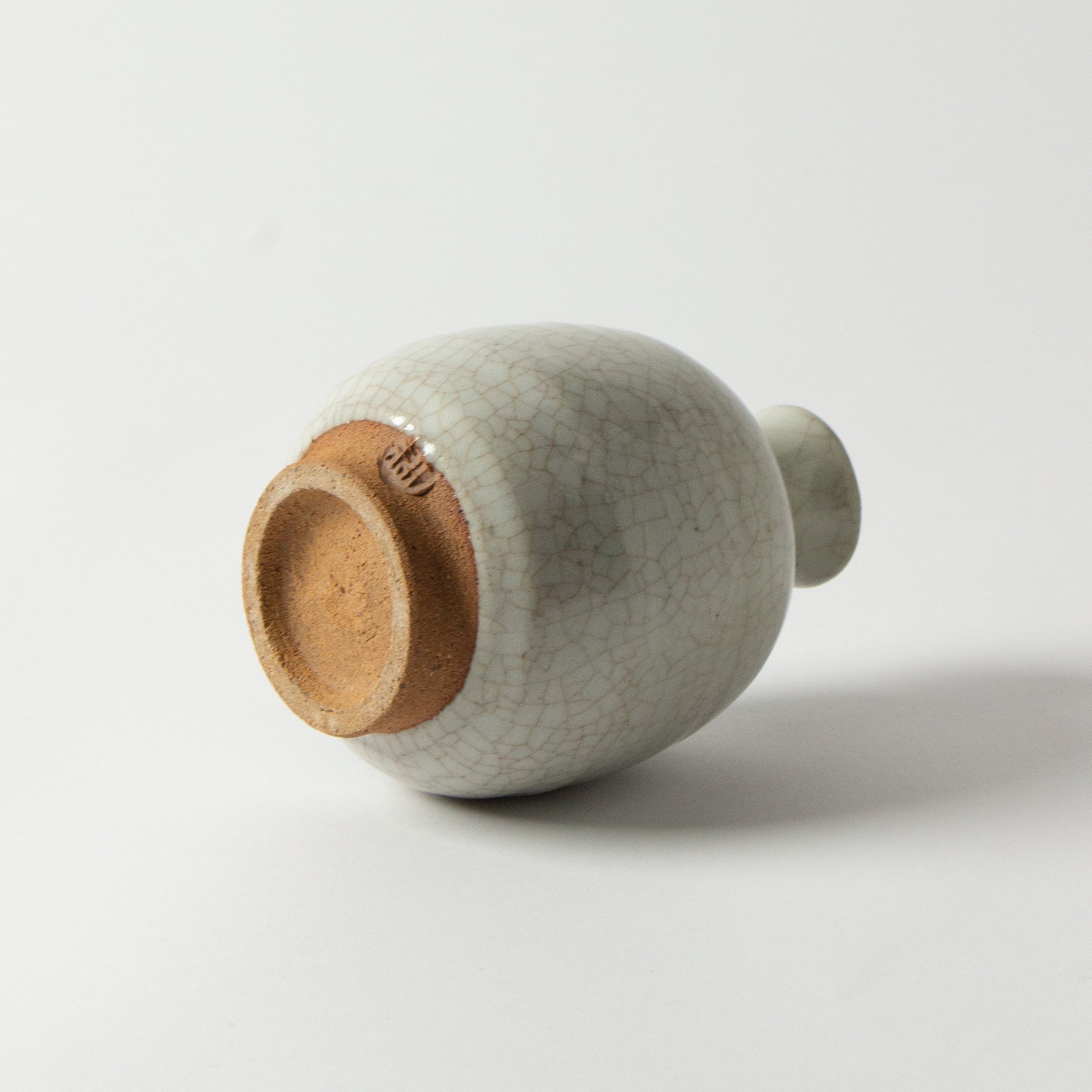
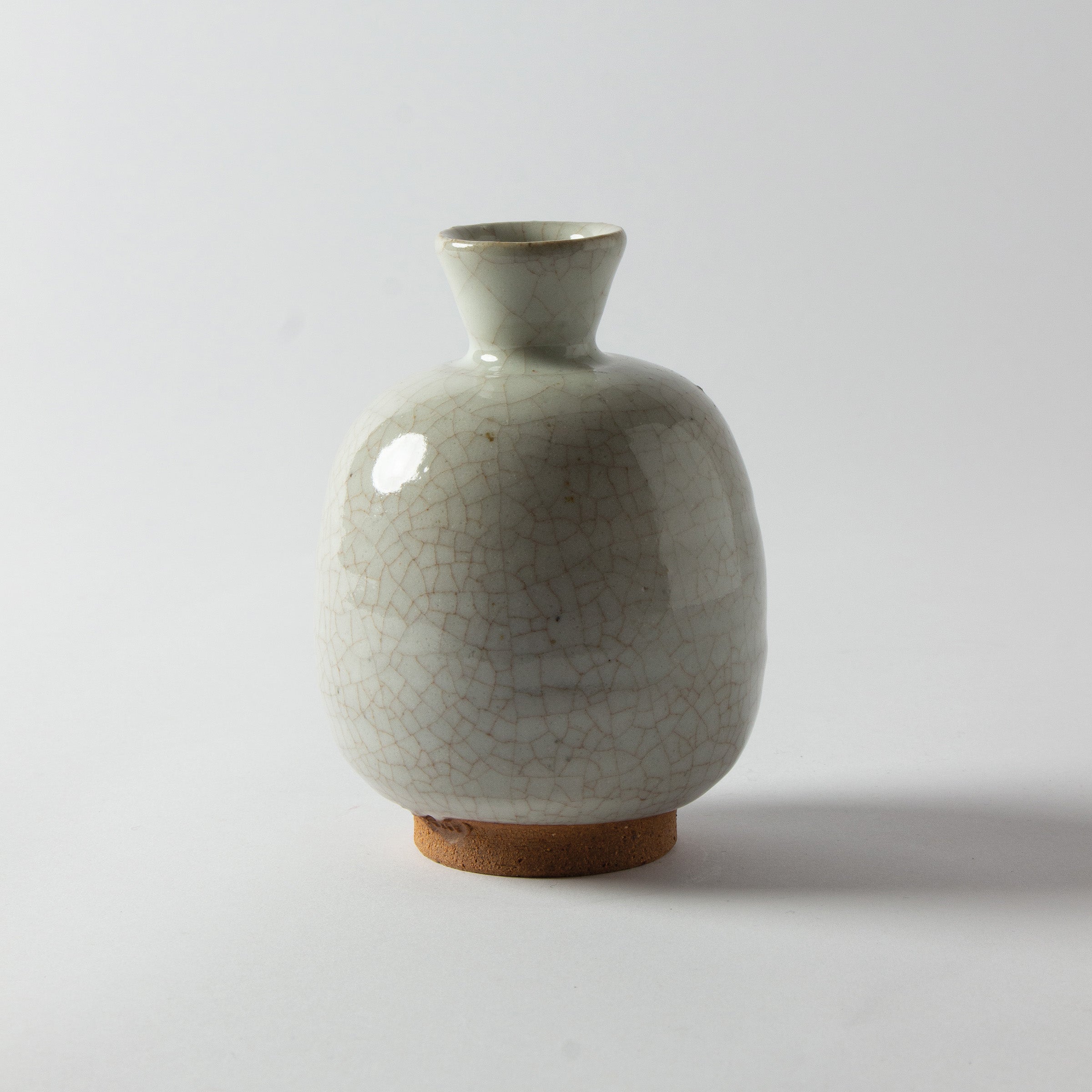
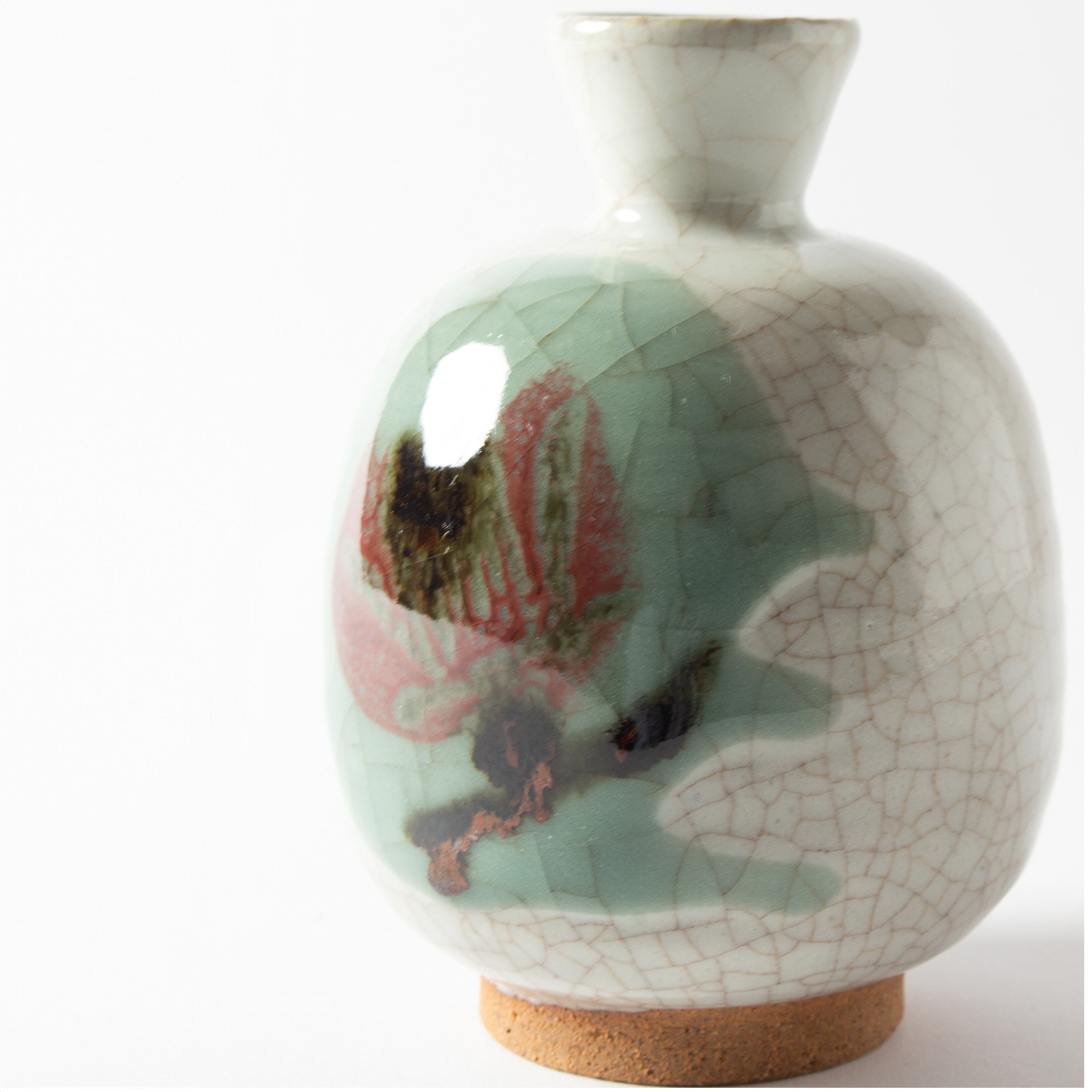
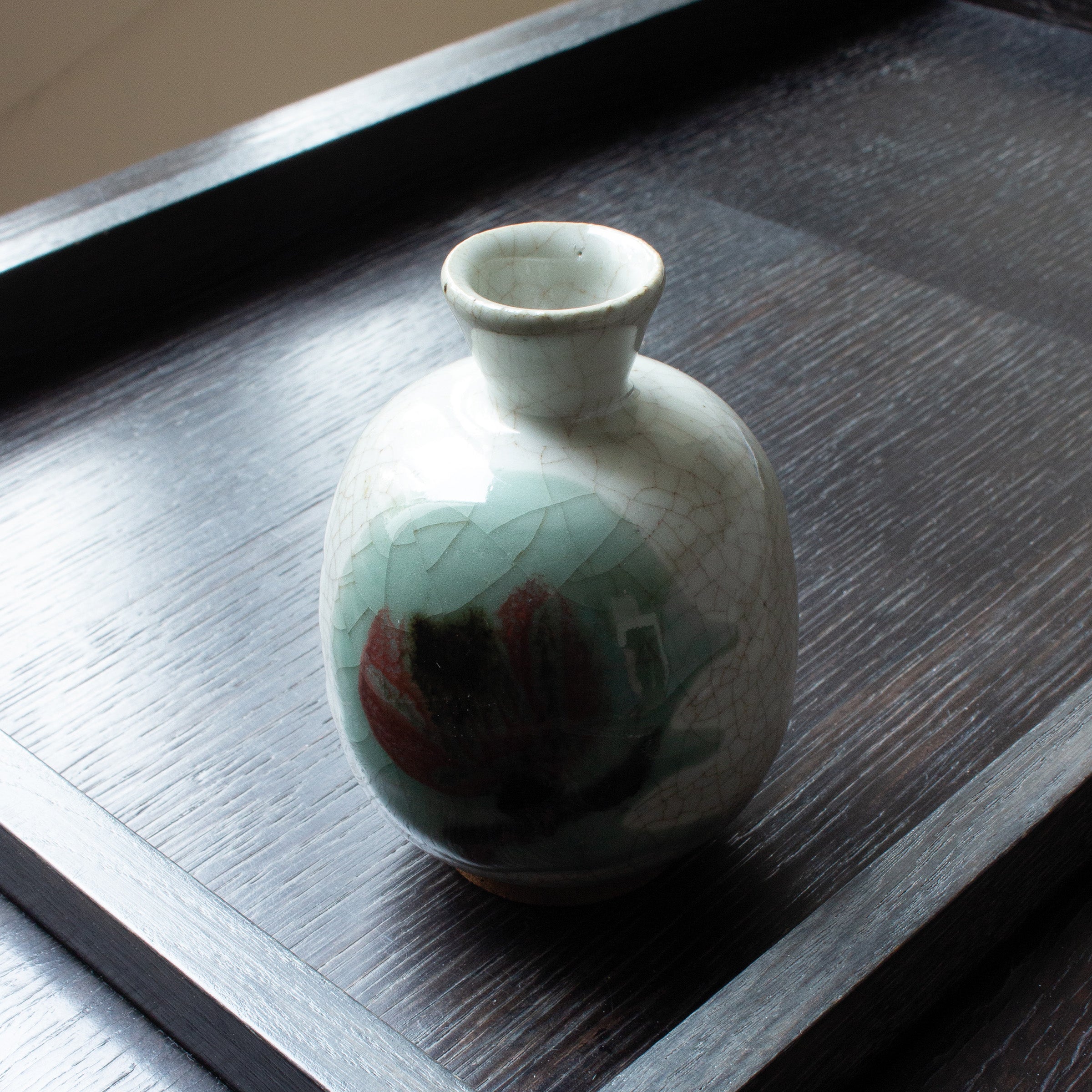
Vase tokkuri by Koichi Tamura
Adorable tokkuri vase (a shape which initial function is to hold sake) by Koichi Tamura (1918-1987), a famous Japanese ceramicist, recognized as a Living National Treasure in 1986 (a rare distinction honoring master craftsmen who perpetuate traditional techniques while innovating in their field). Tamura san is particularly famous for his mastery of tetsu-e, an iron oxide painting technique, of which this vase is the perfect representation. He used a mixture of traditional and modern techniques, such as the wax resist method, to create the delicate floral patterns, on iron-rich glazes. He played with the thickness of the glaze to create deep and elegant color gradients, giving this piece a unique visual balance.
This vase is signed (engraving) by the artist at its base and is accompanied by its wooden protective box on which the artist's name and official seal are affixed (inside the lid) and closed by a sanadahimo (braided cord), guaranteeing its authenticity. A rare and precious piece.About Koichi Tamura:
Born in Sano, Tochigi Prefecture, in 1918, Koichi Tamura studied design at the Tokyo University of the Arts and began his career in 1949 under the tutelage of the great Kenkichi Tomimoto before embarking on ceramics. Throughout his life he held prestigious positions, such as that of president of the ceramics department of the Japan Arts and Crafts Association. He passed away in 1987. Today, a museum is dedicated to him in his hometown of Sano, in Tochigi Prefecture, where his works are exhibited, tracing the evolution of his art from his beginnings to his latest creations.
| PLACE OF MANUFACTURE | JAPAN |
| DIMENSIONS | Height 12cm - Length 8cm - Width 8cm |
| WEIGHT |
0,4kg (vase + box) |
| MATERIALS | Ceramics |
KNOW-HOW
Japanese ceramics, born more than 10,000 years ago, are a dialogue between earth and fire, a quest for harmony through imperfection.
With a wide variety of high-quality raw materials, such as rich clays and natural glazes, each region has developed its own techniques, reflecting the identity of its terroir.
Hand-crafted, these vases, made using the most precious Japanese ceramic techniques, bear the imprint of a master craftsman who is the heir to a thousand-year-old tradition. This living art embodies the essence of Japan, where history and nature unite in beauty.
Although deeply rooted in tradition, these exceptional Japanese ceramic vases, signed by very big names, have a resolutely contemporary spirit while preserving their authenticity, incredibly decorative and wonderfully timeless sculptural pieces.
DELIVERY
Delivery
Free delivery in metropolitan France for purchases over €150. Orders are generally sent within 2 working days, except in special cases announced in the banner at the top of the site.
Precious items are wrapped in beautiful cloth, beautifully tied in the precious art of Korean pojagi. Some exceptions apply, especially if the items are bulky. Learn more >
Detailed information on deliveries is available via this link >
Your invoice will be sent by email
Payment methods
By card (Stripe operator): Visa, MasterCard, Discover, American Express.
Secure card payment with 3D Secure.
By PayPal, Apple Pay, Google Pay and Shop Pay
Returns and exchanges
14 days to change your mind.
CARE INSTRUCTIONS
Handle with care. Rub gently with a soft cloth. Do not place near a heat source.
Choose options










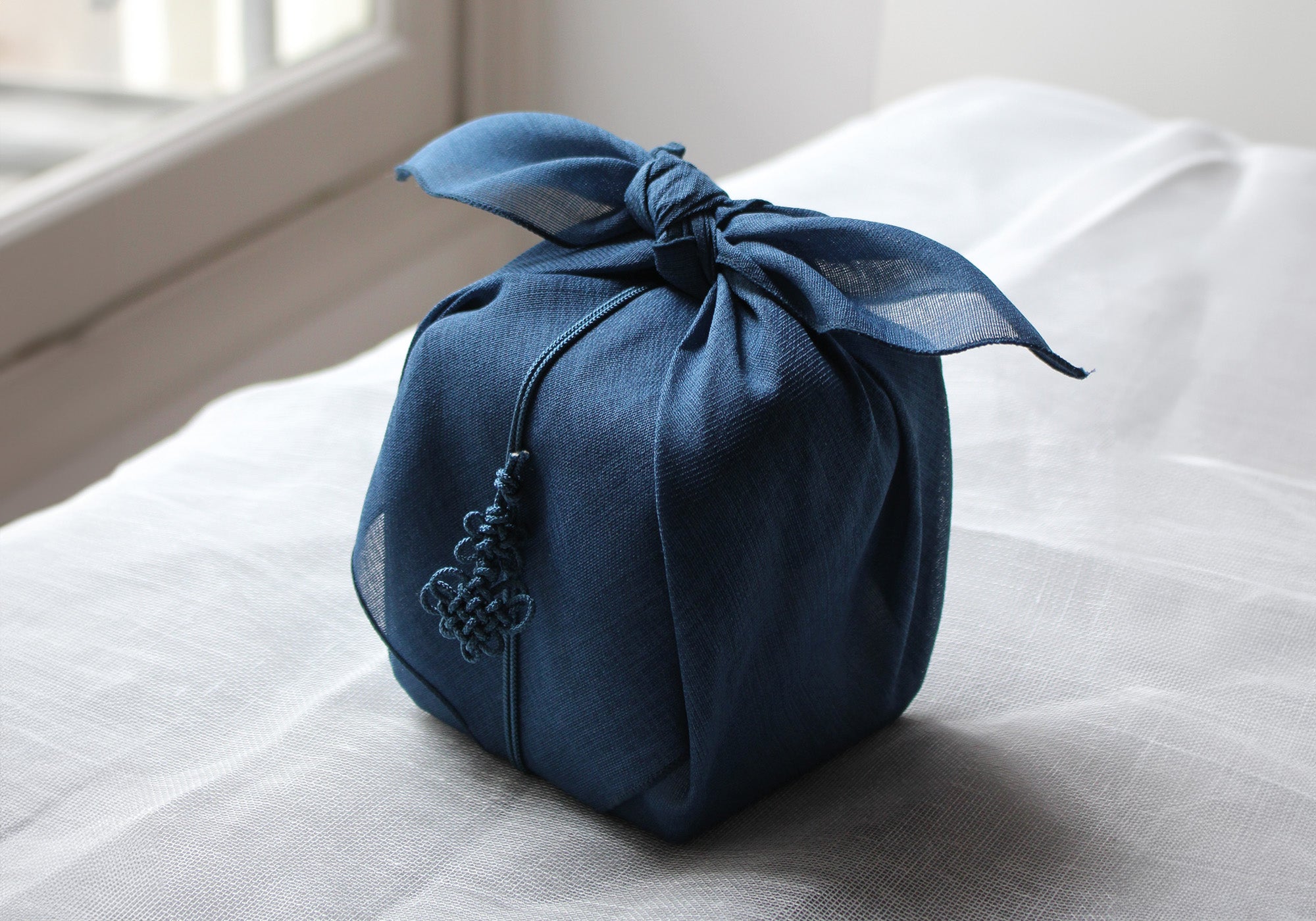
The art of wrapping
The exceptional items are wrapped in a beautiful fabric beautifully knotted using the little-known art of Korean pojagi and decorated with a delightful maedup (Korean ornamental knot). Details and conditions >


